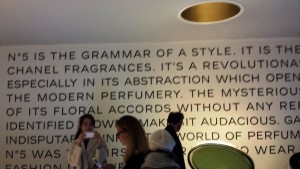In the last couple of weeks I have been frequently reminded of how the rapidly evolving digital world is throwing up new challenges and opportunities.
The first reminder was an article in the FT Weekend Magazine in which Gillian Tett asked why we trust the cyber crowd. She wrote about the vertical axis of trust (‘the establishment’ – politicians, big business, church etc) and the horizontal axis of trust (peer groups, ‘people like me’). The Pew Research Group found that 24% of Americans now trust government compared with 50% at the turn of the millennium. That statistic doesn’t surprise me and suspect it will be similar in the UK. The Socialnomics blog says that 34% of us trust online bloggers and 90% trust peer recommendations online. That shift towards trusting our online peers rather than ‘the establishment’ is no big surprise to those of us working in destinations. The horizontal axis of trust remains strong even though the validity of some peer reviews is occasionally challenged. A case in point is the recent revelation that some authors have ‘bought’ good reviews to push their book up the Amazon popularity charts. So important is peer review to the Amazon model, the company is pursuing around 1000 ‘fake’ reviewers.
The second reminder was a small piece in the London Evening Standard about a new practice among IT trendsetters, by which I mean the types of people who are so ahead of the digital curve that they are creating a new curve. The trend is to switch off all digital activity for extended periods because being digitally ‘on’ the whole time kills creativity. The message is that to do really creative and worthwhile work you need a total digital detox – no social media, no emails, nothing – plus an automated message on your email account that tells the world for how long you are deliberately and purposefully cutting out digital (we are talking days here). If this becomes a trend, then the pace of work life will change from being driven by the speed with which we can share information to a pace that better reflects our creative and productivity rhythms. Some people may say hurrah to that. There is certainly a lot of discussion on and offline about how to manage digital consumption. Reflect on what all this might mean for when and how visitors will use digital communications in the future.
Whatever trends lie ahead, digital is here to stay and none of us is about to fall out of love with our mobile phones anytime soon. Last week I queued for an hour to visit the Mademoiselle Privé exhibition at the Saatchi Gallery. The exhibition was about Coco Chanel and Karl Lagerfield. (The exhibition is now finished, so no spoilers follow). You weaved your way through two floors of rooms until you felt lost in a maze of fabric, iconic symbols and dresses. Predictably, the exhibition was high on style.
Critical to getting the most out of the experience was to download the exhibition app onto your phone (it gave us all something to do in that long queue). Nothing happened until you entered the exhibition at which point Bluetooth kicked in, your phone picked up your location and fed additional information to you related to the room you were standing in. One of the most effective applications was at the start of the exhibition. The first room was a blank white space furnished with a mock-up of the iconic Chanel staircase and a voiceover of Coco Chanel talking about her apartment in Paris. Meanwhile your phone showed you a 360 degree view of the drawing room of Chanel’s apartment. We were standing in a gallery in London viewing a room in a museum in Paris; clever and effective stuff. The exhibition demonstrated that it isn’t having an app that is important, it is deciding an app is the right technology for what you are trying to achieve and then using it well. If you didn’t use the app, the exhibition experience was much more limited and potentially somewhat disappointing. At least that was the view of one friend of mine who visited and chose the low-tech experience.
All this makes me ask at what point do we assume that everyone is digitally literate? Should we assume that people always want to be digitally engaged? Maybe, at some point, the digital curve will even out and development will slow down as we all turn to a regular digital detox or our vertical axis of trust begins to include aspects of the digital world. Who knows, but given the importance of digital technology to destinations, we all need to try and keep pace with change. What we need to remember is that just because its digital doesn’t mean its better or more up-to-date and going ‘all out’ digital isn’t a big deal now. As the Mademoiselle Privé exhibition illustrated, its using technology creatively and wisely that counts.
